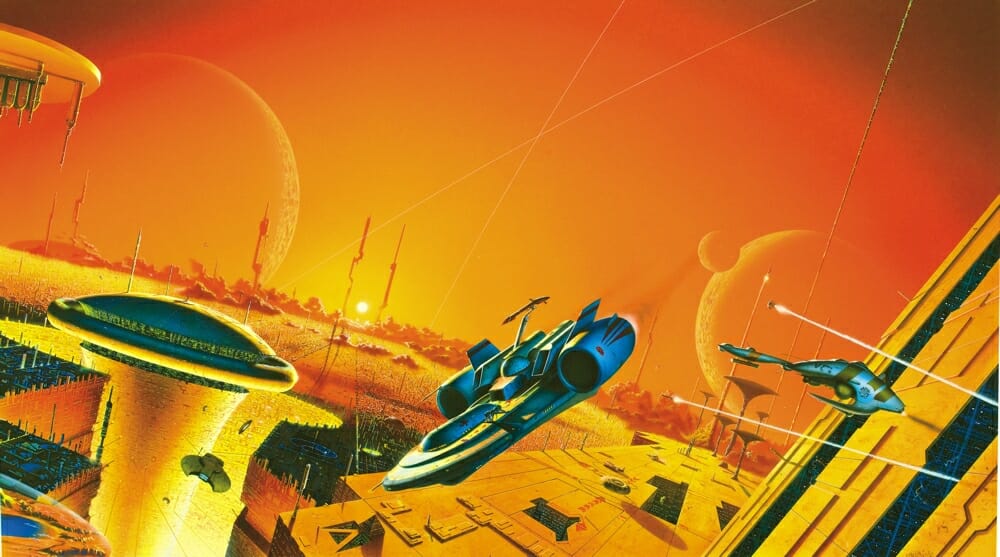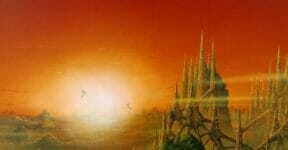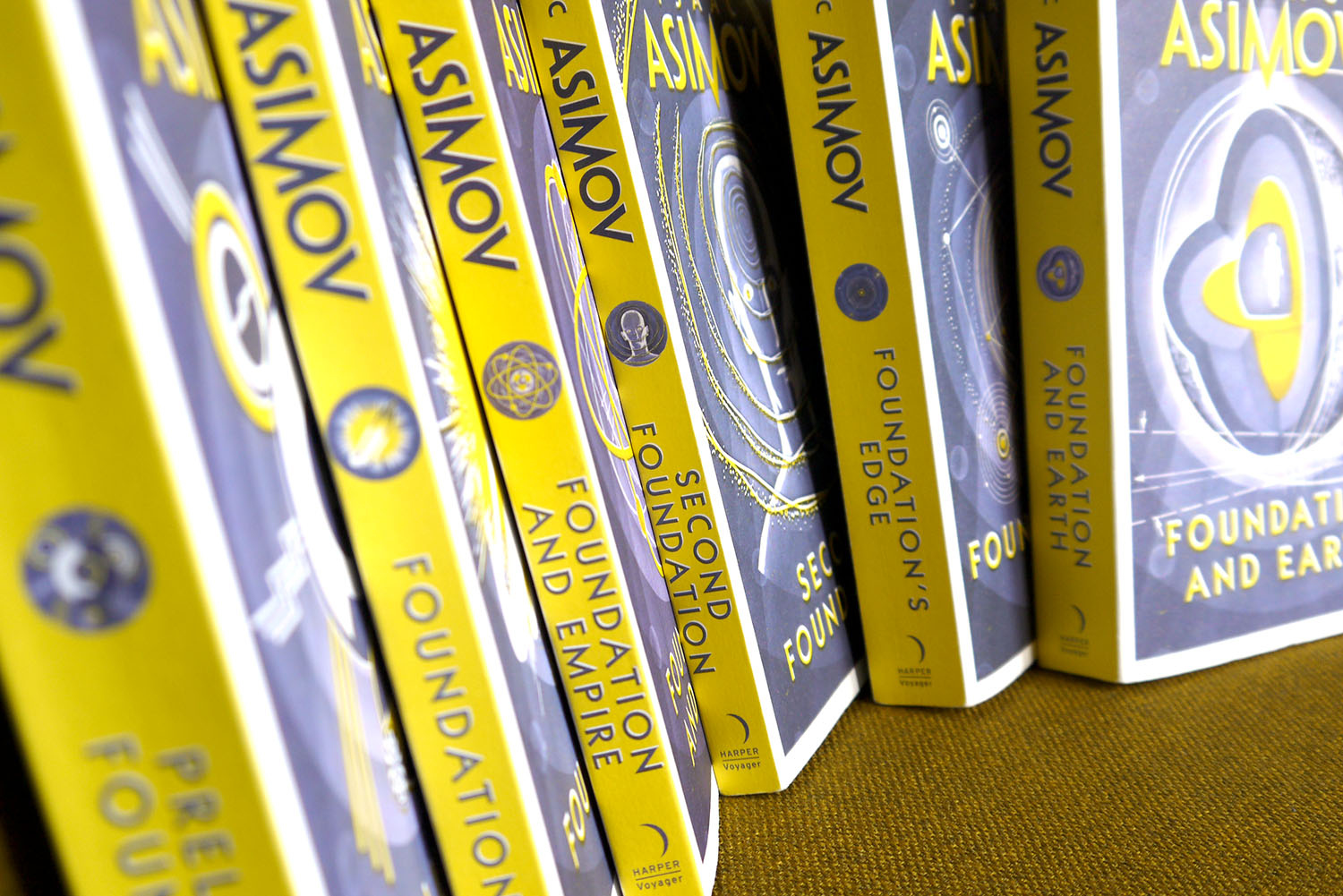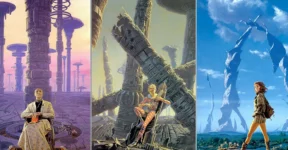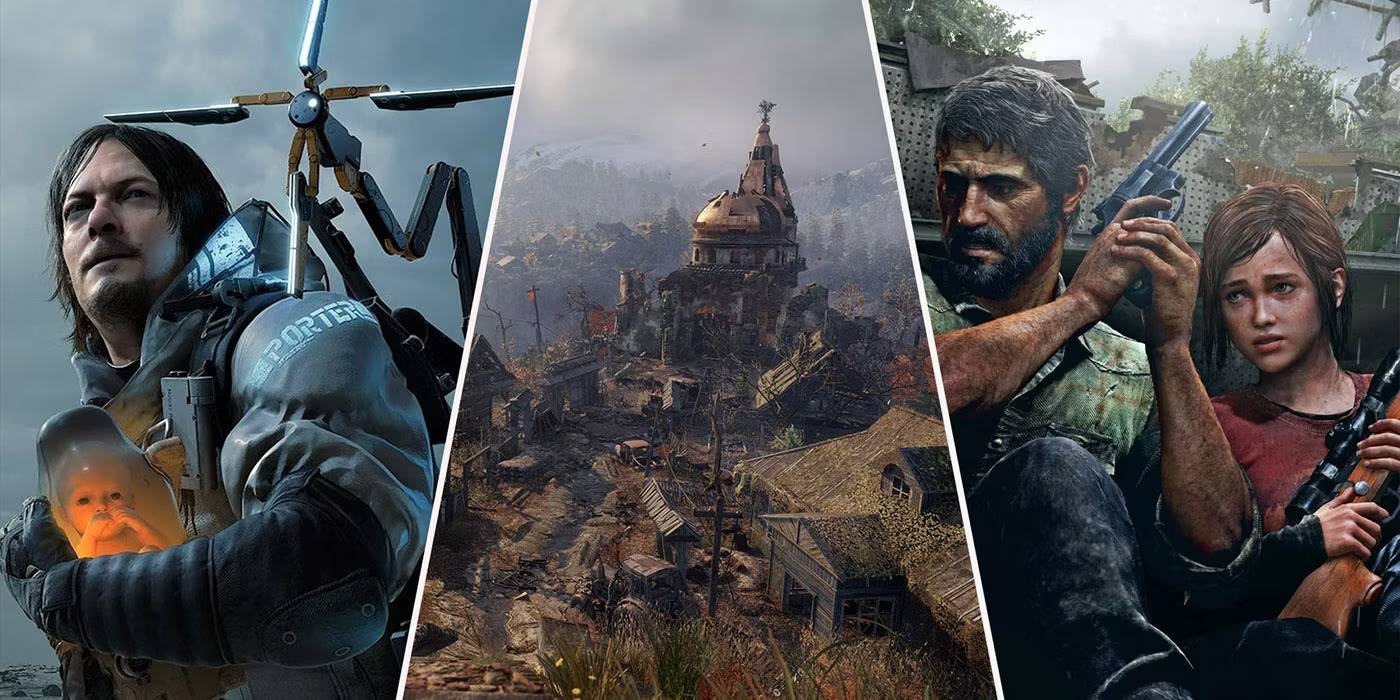
Being the last book in the chronological event of the Foundation series—the fifth to be published (1986)—Foundation and Earth concludes the centuries-long storyline by bringing the great Seldon plan to eventual obsolescence. It also serves as the volume that seamlessly connects the author’s two major sci-fi works, the Foundation and Robot series, into a single universe.
Foundation and Earth continue the journey of councilman Golan Trevize and professor of ancient history Janov Pelorat to locate the mysterious origin planet of humankind: the Earth. In the previous volume, Foundation’s Edge, the search effort brought them to Gaia, where they encountered a woman named Bliss. It turns out that Trevize holds the key to the survival of the galactic civilization because he is the only person in the entire galaxy with the mental power to decide the fate of both the First and Second Foundations, as masterminded by Hari Seldon.
Gaia is unlike any other planet. All the living things and inanimate objects on the planet form a collective consciousness that makes Gaia an unlikely massive superorganism. Everything is connected and plays a role in determining the course of events across the planet to ensure survival against any potential threat. Gaia is the starting point of Galaxia, a single-minded galaxy of the future in which all planets construct a complex and synchronized mental network of unity. In choosing Galaxia over the alternatives, Trevize abandons any regard for the Foundations.
Summary
Earth still has not been found. The only way for Trevize to stop second-guessing his own decision to take sides with Gaia is to find planet Earth. The disappearance of all Earth-related references from the Galactic Library remains a mystery. No one seems to know who is responsible and the reasoning behind it. He thinks the answers lie on Earth itself.
And so Trevize carries on with the search, accompanied by Pelorat and Bliss. The first stop is Comperellon, supposedly the oldest inhabited planet in the galaxy. One of the first major revelations unveiled during the expedition is the origin of galactic civilization itself. There was once an ancient conflict between two groups of descendants of Earthmen: Spacers and Settlers. Following the latter’s victory, the former left Earth and eventually colonized the Milky Way galaxy. While on Comperellon, the expedition also receives information about the coordinates of three early Spacers’ planets including Aurora, Melpomenia, and Solaria. Information pointing to the Earth’s location remains scarce.
Both Aurora and Melpomenia are uninhabited, but Trevize and Co. discover unmistakable remnants of human civilizations. Moreover, they find a list of fifty worlds presumably occupied by the Spacers in the old days. Humans ceased to exist on those planets most likely because they turned into apathetic species after handing over all their daily workload to robots for far too long. Humans ended up losing the will/need to advance civilization. However, things are different in Solaria.
Humans still exist on Solaria, but they have evolved into hermaphrodite species. They self-reproduce and are intolerant of physical interaction/contact. There are only 1,200 Solarians remaining and in fact, the population has remained unchanged for thousands of years. Each Solarian owns an enormous estate and the “asocial society” is not fond of the idea of having too many descendants. The planet (or more precisely its inhabitants) can barely tolerate visitors. In a mental confrontation against a Solarian named Sarton Bander, the expedition team is almost killed but Bliss deflects an attack and defeats the aggressor. The foreigners escape and acquire Bender’s child, Fallom, on their way back to the spaceship.
Trevize, Pelorat, and Bliss (now with Fallom, too) use the map system gained on Melpomenia to deduce Earth’s approximate location and determine its coordinates. They’ve finally made it; they’ve rediscovered the lost home of humankind. But the joy is short-lived because the planet is now filled with nothing but excessive levels of radioactivity, rendering it unable to support life. The only place left to visit is the large nearby satellite, the Moon.
The foundation series comes full circle on the Moon when the expedition team is greeted by a humanoid robot that calls himself R. Daneel Olivaw, the same robot that helped Hari Seldon develop psychohistory and therefore almost single-handedly drove the series’ plot in motion. Olivaw explains his role in manipulating Trevize’s decision to choose Gaia over the First and Second Foundations and admits to being involved in the formation of Gaia to begin with.
According to Olivaw, humanity can only survive in the future when they stop fighting against their own kind for any reason. Gaia, and by extension Galaxia, shall become an impregnable defense that protects humanity from attacks by intelligent civilizations beyond the galaxy. Olivaw is thousands of years old and his brain is apparently deteriorating. He needs someone with exceptional mental power with whom he can merge his now-fragile humanoid brain. The choice is obvious: Fallom.
We think Foundation and Earth is a bit of a mixed bag, and that takes quite an explanation. It is difficult to overestimate the scale and popularity of the Foundation series. While it is impossible to pinpoint the exact sales number of each book in the series, the entire seven volumes certainly have sold at least 20 million copies—and that was years ago, long before Apple streams a screen adaptation.
Most readers will agree that Foundation and Earth can feel unnecessary and long but undoubtedly glorious. At the end of the previous book, Foundation’s Edge, readers already know that Golan Trevize makes the right decision in choosing Gaia/Galaxia, and the subsequent/last book in the series is about the man second-guessing himself. He knows he made the right choice, but he doesn’t know why; it bothers him a lot. As Trevize insists on searching for the answer, the story unfolds page by page, in an excessively pleonastic fashion. Let us not forget about Asimov’s own decision to make Daneel Olivaw the shockingly greatest mind in the entire galaxy, the super-brain humanoid who has basically played God all along.
The transformation of Daneel Olivaw from a humble robot acting in the best interest of humanity into an all-powerful thinker, manipulator, and director of the survival of the galactic civilization (along with the whole unexpectedness of it) might be a little too convenient for Asimov to unify the Foundation and Robot series into a single universe. No one is against Asimov for doing just that, although for sure fans will notice how the novel retcons the original premise of the Foundation series.
Have you finished the Foundation series? Do you think Foundation and Earth give a worthy conclusion? We’d love to hear from you.
Other things you might want to know:
How many books are in the Robot series?
There are in total six novels and 37 short stories in the series, published from 1940 to 1995.
Who built Daneel Olivaw?
A Spacer robot built on Earth, Olivaw was constructed by roboticists Roj Nemennuh Sarton and Han Fastolfe in 4920 AD. He is the first ever humanoid, a robot with an appearance indistinguishable from humans.
What other books are set in the same universe?
Apart from Foundation and Robot, there are also Galactic Empire series, and three stand-alone novels including The Positronic Man (1992), Nemesis (1989), and The End of Eternity (1955).
Check out other articles by month:

